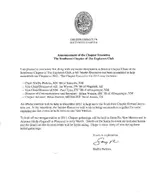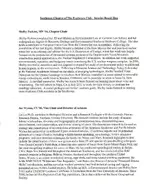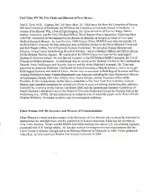Real de Tayopa Tropical Tramp
Gold Member
- Joined
- Nov 8, 2004
- Messages
- 14,582
- Reaction score
- 11,947
- Golden Thread
- 0
- Location
- Alamos,Sonora,Mexico
- Primary Interest:
- All Treasure Hunting
Good morning: Here is an interesitng bit that was posted by Oro in the LDM series. It mentions fire in the Superstitions.
**********************
. This did not disturb him much, however, so he built a fire, roasted a rabbit which he had killed on his way up, and made such preparations as were possible to spend the night comfortably on the mountain. After sundown the atmosphere became quite sultry, and, as there was every indication of a thunder storm, Mr. Bicknell concluded that he would not remain within the walls of the old fort, as the rain was liable to drive from the loose rocks rattlesnakes, centipedes and poisonous insects of various kinds. Therefore he selected for his sleeping place a remarkably smooth rock, about twenty yards in front of the east wall. Putting his hobnail shoes under his head for a pillow, Mr. Bicknell, somewhat exhausted from his long stroll and excitement, soon fell into a deep sleep.
Some time afterward he was suddenly awakened by a sharp electric shock which seemed to pass from the back of his neck downward. Managing to scramble to his feet he ran some distance to the east, and, looking back to his sleeping place, was surprised to see a living line of fire or lightning running across the mountain from north to south. Never having seen "ground lightning" before, Mr. Bicknell was very naturally awe stricken and astounded, but he was more than surprised when, recovering from his bewilderment, he noticed that the electric storm had not passed over tho mountain, but was as distant, apparently, as when he first lay down. The phenomenon lasted but a few moments, but its duration was sufficient for the explorer.
Upon returning to the camp next morning Mr. Bicknell related his experience, which was received with evident incredulity. However, he induced one of the men to accompany him to the mountain a few days afterward. They reached the summit about noon, and the weather was very warm. The men were standing upon the smooth spot which Bicknell had selected for a couch, and he was explaining about his shock, when, with simultaneous impulse, they both sprang forward and gazed into each other's faces in mute interrogation. Subsequent explanation showed that each had experienced a well defined electric shock, as , though by a light current from a galvanic battery.
Mr. Bicknell at once concluded that he would solve the mystery, and set about doing so, although his companion wus most anxious to leave the dread spot. The investigations then begun, and subsequently completed, led to the following discoveries:
On the north side of the precipice was a large dyke of pyritous iron, running east and west, and on its south wall the mineral appeared in the form of protosulphates, or what is commonly known as copperas. In the latter there was a small, irregularly shaped hole several feet in depth, into which water was slowly sipping from a small spring on a slight eminence some yards distant. This water was strongly impregnated with salt. From this pot hole and extending across the mountain top were a number of small veins, or stringers, of copper ore, almost pure in their native state, which terminated, to all appearances, in a heavy ledge of calcspar, bearing galena and a small percentage of gold, running parallel with the copper lead, but on the opposite brink of the bluff. The copper stringers connecting the ledges were evidently what is known in prospectors' parlance as a "blow out," and rested on malpais a kind of glassy slag produced by volcanic heat. Here was a positive and a negative pole, connected with a good electric conductor, and a chemical decomposition taking place that would produce a strong battery. With a jar of the copper stringers, produced by atmosphoric electrical disturbances or a number of persons stopping upon them, why might not a current be induced sufficiently strong as to become destructive to Animal life? But simply the facts are given, and the scientific reader is at liberty to evolve his own theories.
<<from the Evening Bulletin, Jan 15th 1890>>
Don Jose de La Mancha
**********************
. This did not disturb him much, however, so he built a fire, roasted a rabbit which he had killed on his way up, and made such preparations as were possible to spend the night comfortably on the mountain. After sundown the atmosphere became quite sultry, and, as there was every indication of a thunder storm, Mr. Bicknell concluded that he would not remain within the walls of the old fort, as the rain was liable to drive from the loose rocks rattlesnakes, centipedes and poisonous insects of various kinds. Therefore he selected for his sleeping place a remarkably smooth rock, about twenty yards in front of the east wall. Putting his hobnail shoes under his head for a pillow, Mr. Bicknell, somewhat exhausted from his long stroll and excitement, soon fell into a deep sleep.
Some time afterward he was suddenly awakened by a sharp electric shock which seemed to pass from the back of his neck downward. Managing to scramble to his feet he ran some distance to the east, and, looking back to his sleeping place, was surprised to see a living line of fire or lightning running across the mountain from north to south. Never having seen "ground lightning" before, Mr. Bicknell was very naturally awe stricken and astounded, but he was more than surprised when, recovering from his bewilderment, he noticed that the electric storm had not passed over tho mountain, but was as distant, apparently, as when he first lay down. The phenomenon lasted but a few moments, but its duration was sufficient for the explorer.
Upon returning to the camp next morning Mr. Bicknell related his experience, which was received with evident incredulity. However, he induced one of the men to accompany him to the mountain a few days afterward. They reached the summit about noon, and the weather was very warm. The men were standing upon the smooth spot which Bicknell had selected for a couch, and he was explaining about his shock, when, with simultaneous impulse, they both sprang forward and gazed into each other's faces in mute interrogation. Subsequent explanation showed that each had experienced a well defined electric shock, as , though by a light current from a galvanic battery.
Mr. Bicknell at once concluded that he would solve the mystery, and set about doing so, although his companion wus most anxious to leave the dread spot. The investigations then begun, and subsequently completed, led to the following discoveries:
On the north side of the precipice was a large dyke of pyritous iron, running east and west, and on its south wall the mineral appeared in the form of protosulphates, or what is commonly known as copperas. In the latter there was a small, irregularly shaped hole several feet in depth, into which water was slowly sipping from a small spring on a slight eminence some yards distant. This water was strongly impregnated with salt. From this pot hole and extending across the mountain top were a number of small veins, or stringers, of copper ore, almost pure in their native state, which terminated, to all appearances, in a heavy ledge of calcspar, bearing galena and a small percentage of gold, running parallel with the copper lead, but on the opposite brink of the bluff. The copper stringers connecting the ledges were evidently what is known in prospectors' parlance as a "blow out," and rested on malpais a kind of glassy slag produced by volcanic heat. Here was a positive and a negative pole, connected with a good electric conductor, and a chemical decomposition taking place that would produce a strong battery. With a jar of the copper stringers, produced by atmosphoric electrical disturbances or a number of persons stopping upon them, why might not a current be induced sufficiently strong as to become destructive to Animal life? But simply the facts are given, and the scientific reader is at liberty to evolve his own theories.
<<from the Evening Bulletin, Jan 15th 1890>>
Don Jose de La Mancha









